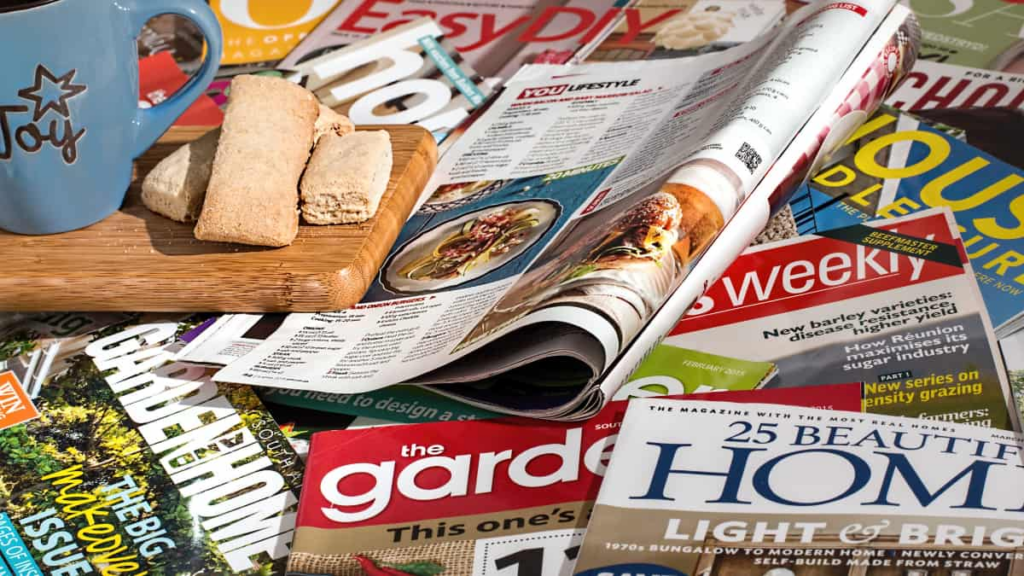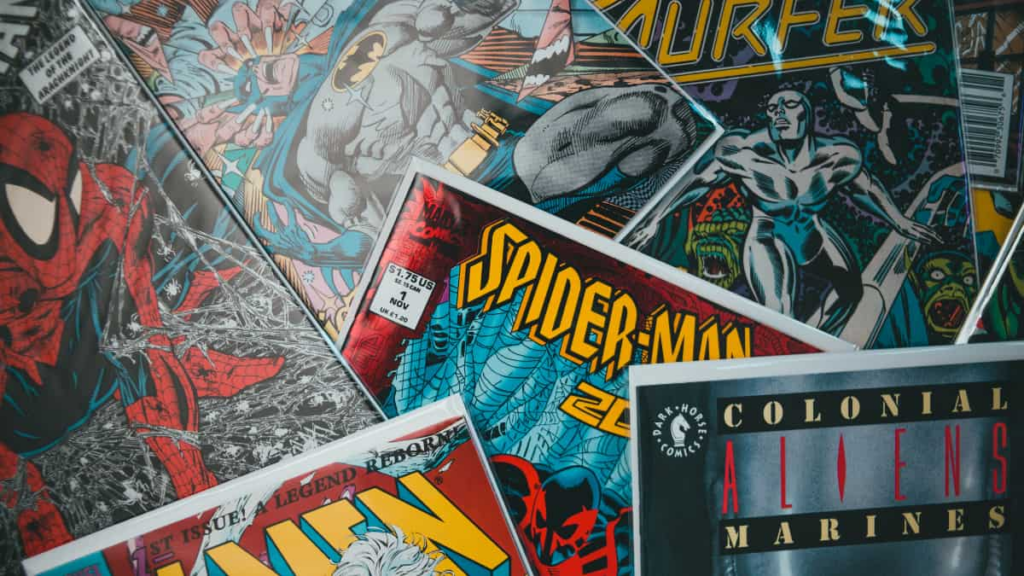Books are stacking up again on nightstands, coffee tables, and in backpacks. The print revival is quietly reshaping how people interact with stories, ideas, and information in everyday life.
Generation Z is leading the charge, turning pages instead of scrolling. Whether for aesthetics, focus, or nostalgia, physical media is making a steady return—and it’s not just a passing phase.
This guide by Insiderbits uncovers what’s really fueling this cultural shift. Stick around to see why readers of all ages are trading pixels for paper and what it means for 2025.
Correlato: Scaricare Legalmente Libri PDF gratis
Is the Print Revival Real? Why Books Are Thriving

Screens aren’t going anywhere, but people are rediscovering the rhythm of slower, more mindful reading. Print books are regaining ground, especially among readers seeking focus and clarity.
Bookstores are filling up again, and library card registrations have seen renewed interest. Physical pages offer a sense of pause, a small act of rebellion in a hyper-connected world.
This renewed energy around analog reading speaks to something deeper. The print revival is more than nostalgia—it’s a shift in how people value presence and long-form content.
Physical Media as a Response to Digital Fatigue
Constant pings, endless tabs, and glowing screens are wearing people out. The more time spent online, the more appealing offline activities like reading a printed book become.
Print offers a focused environment—no notifications, no screen glare. It’s easier to get immersed, and there’s no temptation to check social media mid-chapter.
As attention spans shrink, the print revival offers something digital can’t: uninterrupted stillness. That quiet space is increasingly rare, and readers are holding on to it.
Are Print Books Really Outselling Digital?
E-books and audiobooks continue to hold space, but print books are still leading in volume. Readers haven’t given up on the satisfaction of a tangible read.
Publishers Weekly reports that U.S. print book sales fell just 2.2% in the first half of 2024 compared to the previous year, signaling remarkable stability despite digital competition.
Even with slight dips, the print revival is holding strong. Physical books still account for the majority of book sales, proving that paper isn’t going anywhere soon.
Tactile Experience: The Appeal of Holding a Book
There’s something irreplaceable about holding a book. The paper texture, the weight in your hands, and even the smell are physical cues that create a deeper emotional connection.
Unlike screens, books have no brightness settings. The visual comfort of ink on paper is gentle, making it easier to read longer without strain or distraction.
For many, the print revival is grounded in the sensory experience. It’s about feeling the story and creating a bond with what’s being read through touch.
How Gen Z Is Reviving Print Culture

Digital natives aren’t turning their backs on technology. But many in Gen Z are picking up books and zines to reconnect with something more grounded and personal.
What started as an aesthetic curiosity soon became a habit. Printed words offer an intentional break from online life, something that feels refreshing and essential for mental balance.
This generational shift is helping fuel the print revival, as Gen Z chooses to make room for analog joy without completely turning away from digital life.
Social Media’s Role in Print’s Comeback
BookTok, Bookstagram, and reading vlogs have transformed reading into a lifestyle trend. Peer recommendations now travel quickly and often arrive in hardcover or paperback form.
Gen Z influencers highlight curated shelves, annotated pages, and thrifted zines as personal treasures. Print is being read, styled, and celebrated across feeds and stories.
The print revival is gaining visibility through these platforms. Physical books have become expressions of identity, turning literary taste into something visually engaging and relevant.
From E-books to Bookshelves: A Shift in Preferences
Gen Z values simplicity. Printed books offer clarity and presence, far from the distractions, pop-ups, and backlight fatigue that often come with digital reading experiences.
Many young readers are buying physical books again. Holding a story, flipping real pages, and seeing progress offers satisfaction that swiping can’t replicate.
That behavioral shift keeps the print revival alive. It’s not about rejecting tech—it’s about choosing depth, presence, and something real over another hour spent on a screen.
Print as Aesthetic: Why Physical Media Fits Gen Z’s Style
For Gen Z, how something looks matters. Books, zines, and prints are not only read, they’re also displayed, photographed, and matched with personal room vibes.
Beautiful editions, thrifted finds, and indie designs speak louder than generic e-readers. Print feels like art, and Gen Z treats it as such.
Physical media has become part of self-expression, and that mindset is quietly fueling the print revival through beauty, permanence, and the joy of collecting.
Correlato: The 10 Best Apps For Reading Books For Free
The Rise of Indie Magazines in a Digital World

In an age ruled by algorithms, indie magazines are offering something different. They bring back thoughtful curation, creative freedom, and slower consumption in a fast-scrolling world.
Created by writers and communities, these magazines offer fresh voices and new designs. They feel personal and distinctly unlike mass-market publications or digital content feeds.
As readers seek more tangible experiences, the print revival finds support in this niche. Indie magazines are proving print can still be experimental, collectible, and culturally relevant.
What Makes Indie Magazines So Appealing Today?
Indie magazines often focus on overlooked topics, subcultures, or hyperlocal stories. They feel raw and authentic, far from the polished, ad-heavy style of commercial publications.
Their visuals are striking, their formats surprising. No two issues look alike, which makes flipping through one feel like an artistic experience rather than simple reading.
This creative freedom feeds the print revival. These magazines thrive because they invite discovery and reflection, two things that are hard to find in digital formats alone.
Collectibility and Limited Runs: The New Cool
Many indie magazines are released in small batches, sometimes just a few hundred copies. That scarcity adds value, turning them into collector’s items almost instantly.
People aren’t just reading them—they’re archiving them. Issues get passed around, framed, or stored with care, treated more like objects than disposable entertainment.
When something feels rare and thoughtfully made, it becomes worth keeping and revisiting—a feeling that continues to quietly drive the print revival among collectors and readers.
Why People Are Turning Away from Digital Reading

Notifications, pop-ups, and endless tabs make deep reading harder. For many, reading digitally feels more like multitasking than enjoying a calm, immersive experience.
The pressure to consume quickly often leads to skimming. Articles, posts, and digital books become fleeting, with little emotional connection or memory attached to what was read.
Many feel drained by constant digital input. This growing fatigue is leading readers back to slower, more mindful experiences, quietly supporting the return of the print revival.
The Problem with Algorithms and Content Overload
Algorithms constantly serve new content, but not always what readers really want. Personal interest gets lost in a sea of trending, optimized, and ad-heavy material.
Digital feeds rarely pause, and there’s always something more. Overwhelm can leave readers feeling unsatisfied, even after hours spent scrolling through recommended articles.
This content saturation encourages the print revival. People are turning to finite materials that don’t refresh endlessly—books and magazines that invite focus rather than decision fatigue.
Mental Health and the Return to Analog Activities
Endless screen exposure is linked to anxiety and burnout. For many, taking a break from devices means choosing media that doesn’t demand constant input or reaction.
Reading physical books or magazines creates a quieter space. No screen glare, no app hopping, just uninterrupted time with the story or subject in your hands.
Seeking calm and focus, readers are returning to slower habits. This renewed interest in mindful media is helping sustain the quiet momentum of the print revival.
Digital Convenience vs Physical Connection
- Instant Access and Portability: digital reading allows immediate downloads, syncing across devices, and storage of thousands of books, ideal for readers on the go;
- Customization and Accessibility: e-books offer adjustable fonts, night modes, and dictionaries, which can be helpful for those with vision needs or language learners;
- Distractions and Screen Fatigue: reading on devices can lead to eye strain, pop-up interruptions, and multitasking, which can reduce comprehension and satisfaction;
- Emotional Depth and Tactile Memory: physical books offer sensory cues that reinforce recall and emotional connection, a key reason behind the print revival;
- Cost and Sustainability: digital formats reduce paper use and can be cheaper, but they rely on energy, devices, and may not offer the same longevity or ownership;
- Longevity and Collectibility: print materials can be kept, gifted, or archived. They age with the reader and often hold sentimental value that files and apps don’t;
- Space and Practicality: physical books require shelves, packing, and care. While charming to some, others may find them bulky or difficult to maintain over time.
- Search and Navigation: digital books allow fast keyword searches and annotations. However, they may lack the intuitive ease of flipping to a dog-eared page or chapter.
Correlato: Revolutionizing How We Read: Apps for Audiobooks in 2025
What the Future Holds for Print Media in 2025

Print is adapting, not disappearing. In 2025, readers are choosing formats based on experience, with print offering something digital can’t always replicate: presence and intentional focus.
Rather than being nostalgic, the return to paper reflects shifting habits. Many are rediscovering the value of slowness, attention, and the feeling of finishing a real book.
This quiet momentum continues to shape the print revival. With changing expectations and new demands, print is earning its place alongside technology, not being left behind.
Hybrid Consumption: Can Digital and Print Coexist?
People read across formats now. Some prefer digital on the go and physical copies at home. The choice often depends on purpose, convenience, and concentration.
Digital formats provide speed and portability. Print creates a deeper connection. Each format serves a different mood, allowing readers to personalize how they consume content.
Readers now move between formats with intention. Print offers emotional depth, while digital provides convenience. This thoughtful balance continues to strengthen the print revival today.
Is Print a Trend or a Long-Term Shift?
Short-lived trends come and go, but print’s renewed presence shows steady growth. This movement is rooted in care, creativity, and a need for deeper engagement.
Readers aren’t returning to print for novelty. They’re doing it for clarity, beauty, and the ability to disconnect without feeling like they’re missing out.
That’s why the print revival feels different. It speaks to lasting habits rather than hype, offering experiences that feel more grounded, thoughtful, and rewarding over time.
How Publishers Are Adapting to the New Demand
Publishers are reimagining physical products. Thoughtful design, materials, and high-quality formats are turning printed content into something people want to own, not just read once.
Special editions and artistic collaborations reflect how the print revival is influencing production choices. Publishers are creating objects that offer value beyond the story on the page.
This new approach centers the reader. It’s about connection, creativity, and creating printed works that feel personal, timeless, and worth keeping long after the first read.
Books and Magazines Remain Essential in Digital Age
The renewed popularity of physical books and magazines proves digital isn’t everything. Readers are reconnecting with print, appreciating its charm and storytelling experiences.
This guide by Insiderbits explored the print revival, highlighting how independent publishers, young readers, and innovative creators are actively reshaping the publishing landscape today.
For more engaging trends, helpful insights, and fresh ideas on media, technology, and lifestyle, stay connected with Insiderbits—your trusted resource for informative articles daily.





